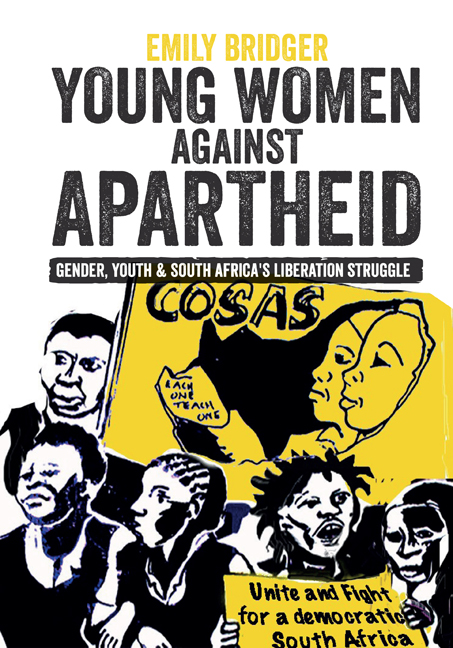Book contents
- Frontmatter
- Dedication
- Contents
- Acknowledgements
- List of Acronyms and Abbreviations
- Glossary
- Map of Soweto
- Introduction
- 1 African Girlhood under the Apartheid State
- 2 The School: Becoming a Female Comrade
- 3 The Home: Negotiating Family, Girlhood, and Politics
- 4 The Meeting: Contesting Gender and Creating a Movement
- 5 The Street: Gendering Collective Action and Political Violence
- 6 The Prison Cell: Gender, Trauma, and Resistance
- 7 The Interview: Reflecting on the Struggle
- Conclusion
- Bibliography
- Index
- Related James Currey titles on South & Southern Africa
7 - The Interview: Reflecting on the Struggle
Published online by Cambridge University Press: 09 February 2021
- Frontmatter
- Dedication
- Contents
- Acknowledgements
- List of Acronyms and Abbreviations
- Glossary
- Map of Soweto
- Introduction
- 1 African Girlhood under the Apartheid State
- 2 The School: Becoming a Female Comrade
- 3 The Home: Negotiating Family, Girlhood, and Politics
- 4 The Meeting: Contesting Gender and Creating a Movement
- 5 The Street: Gendering Collective Action and Political Violence
- 6 The Prison Cell: Gender, Trauma, and Resistance
- 7 The Interview: Reflecting on the Struggle
- Conclusion
- Bibliography
- Index
- Related James Currey titles on South & Southern Africa
Summary
After joining COSAS in 1985, Beatrice became a particularly active young comrade in her home township of Pimville. Throughout the latter half of the 1980s she worked as a women's organiser for the student and youth movement. When negotiations between the apartheid government and the ANC began in 1990, she continued her political participation and is still an active member of the ANC today. During our interview in 2015, my first impression of Beatrice was of a confident and passionate woman who was eager to share her story with a foreign researcher. She spoke about her past with a tangible sense of personal agency and pride in her accomplishments. At times this was expressed in terms of the collective achievements of her generation. Drawing on and contesting wider public memories of the struggle, she argued, ‘I think it’s, to be honest, normally they say June 16th [1976], that's the era of the people that liberated our country. But it's not true. I’m not saying it because I was there, but I believe it's our era, from 1985, yes, the COSAS leaders, SOSCO, they are the people who liberated this country.’ Yet she also clearly believed in the importance of the individual role she played. Discussing male comrades in Soweto, she stated ‘I think most of the guys, they would say it's Beatrice; when they talk about Pimville they will talk about me.’ Far from overstating her personal importance to the liberation movement, Beatrice was right – when I spoke to male comrades from Pimville they did mention her as a key political force in the community.
Towards the end of our interview, I asked Beatrice if she today feels empowered by everything she went through as a teenager. Given my initial impression of her, I expected her answer to be an explicit ‘yes’. However, her response was more complex than I anticipated:
Not exactly, because I’m still struggling now. You can see [laughs, motions around her township home]. I was supposed to have my own house, have my own car, but I’m not driving. It's difficult…But what can I say, at least I have something for my family. But basically, I’m battling, and you wouldn't say that I’m a politician other than that I’ve donated a lot.
- Type
- Chapter
- Information
- Young Women against ApartheidGender, Youth and South Africa's Liberation Struggle, pp. 192 - 216Publisher: Boydell & BrewerPrint publication year: 2021

